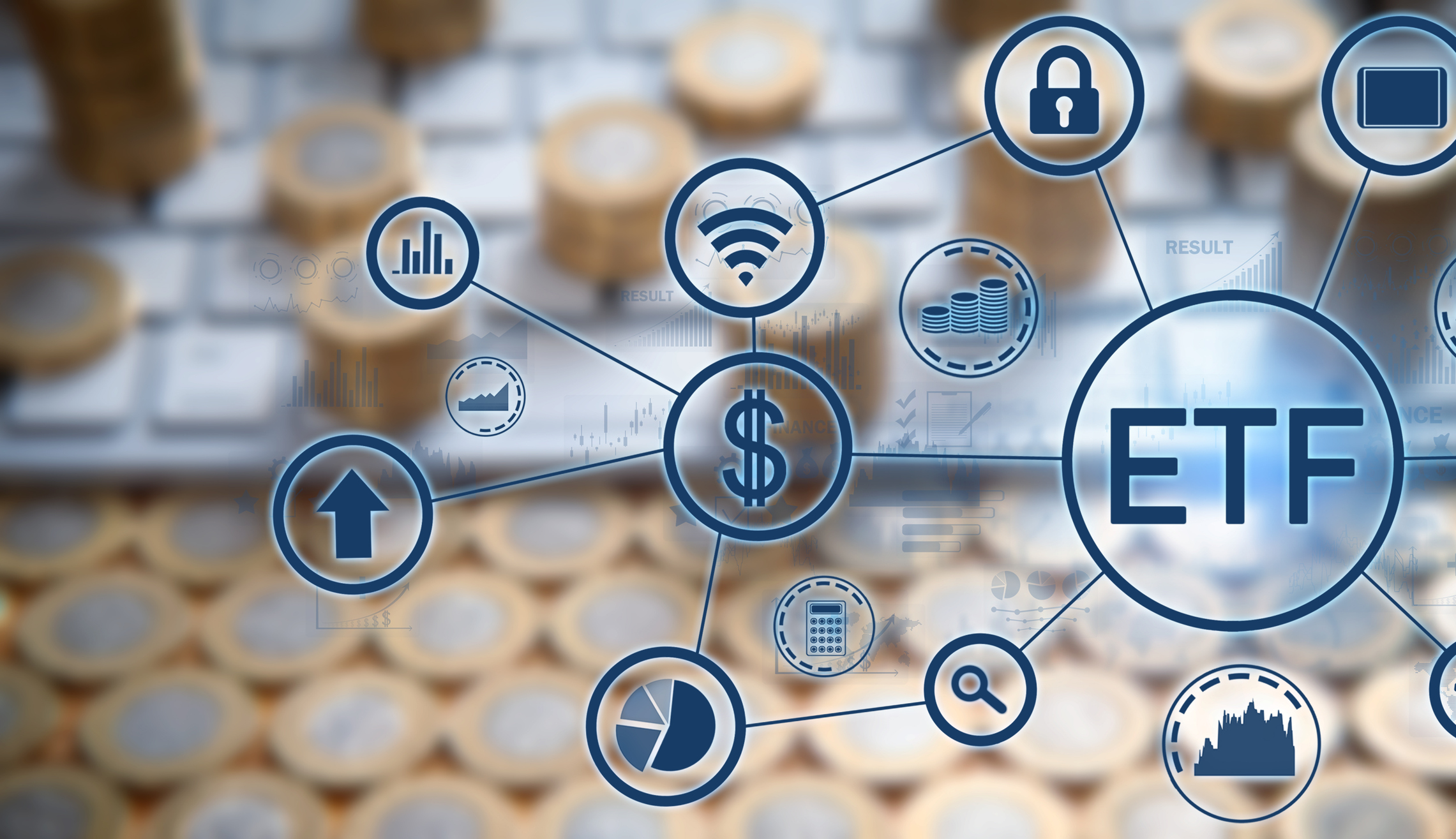3 ETFs for the Trump Presidency
Stock market volatility has picked up since Inauguration Day. These ETFs can help investors can navigate the ups and down of the second Trump era.


President Donald Trump wasted no time getting to work post-inauguration. Between January 20 and March 18, he signed a total of 93 executive orders. Many of these focus on his administration's aggressive cost-cutting measures under the newly created Department of Government Efficiency (DOGE), while others impact energy, healthcare, the rollback of diversity, equity, and inclusion (DEI) initiatives and, of course, tariffs.
While not all of these are relevant to markets, some certainly are – and investors clearly agree. Just take a look at the Cboe Volatility Index, or VIX, which surged nearly 20% in February. And in mid-March, the VIX hit its highest level since the August stock market crash.
Often referred to as Wall Street's "fear gauge," the VIX measures expected volatility in the S&P 500 based on options pricing. When uncertainty spikes – whether due to economic concerns, geopolitical events or shifting policy out of Washington – so does the VIX, signaling heightened investor anxiety.
From just $107.88 $24.99 for Kiplinger Personal Finance
Become a smarter, better informed investor. Subscribe from just $107.88 $24.99, plus get up to 4 Special Issues

Sign up for Kiplinger’s Free Newsletters
Profit and prosper with the best of expert advice on investing, taxes, retirement, personal finance and more - straight to your e-mail.
Profit and prosper with the best of expert advice - straight to your e-mail.
That said, uncertainty doesn't have to mean losses. There are many ways to position a portfolio to manage volatility and even capitalize on it.
Exchange-traded funds (ETFs) provide a convenient way for investors to diversify risk from a second Trump presidency while helping them stay the course. Here's a look at three of the best ETFs for investors to consider.
Harvest higher volatility with covered calls
One highly popular actively managed ETF benefiting from market volatility is the JPMorgan Equity Premium Income ETF (JEPI), which has amassed $39 billion in assets under management.
JEPI's strategy is twofold. First, it selects a subset of S&P 500 stocks with historically lower volatility, aiming to provide a smoother return profile than the broader index.
Second, it enhances income by selling covered calls on the S&P 500 through equity-linked notes (ELNs), which is where heightened volatility comes into play.
Covered calls work by selling the future upside of an asset or index in exchange for an immediate cash premium. The value of this premium depends on several factors, including the time remaining until the call expires, how far the strike price is from the market price, and – critically – the volatility of the underlying asset.
Higher volatility increases option premiums, meaning that in turbulent markets, JEPI's covered call overlay tends to generate more income.
Even better, if markets remain rangebound due to ongoing Trump-related uncertainty and lofty valuations, it bodes well for covered call strategies.
These approaches tend to outperform when stocks trade sideways because they keep collecting premium income without sacrificing as much upside as they would in a strong bull market.
Right now, JEPI is yielding 7.2% on a 30-day SEC basis, with monthly distributions. Despite being actively managed, it remains relatively affordable with a 0.35% expense ratio.
Learn more about JEPI at the J.P. Morgan provider site.
Mitigate sector concentration with equal weighting
The current composition of the S&P 500 Index is heavily skewed, with a roughly 32% allocation to tech stocks. This concentration is the result of the S&P 500's market-cap weighting, where the largest companies receive the highest weightings, combined with a decade of outperformance by technology giants.
For better or worse, Big Tech is now firmly in Washington, D.C.'s crosshairs. Several high-profile tech leaders – including former Amazon (AMZN) CEO Jeff Bezos, Meta Platforms (META) CEO Mark Zuckerberg, Alphabet (GOOGL) CEO Sundar Pichai and Tesla (TSLA) CEO Elon Musk – attended Trump's inauguration, but there's no telling what policies may emerge in the coming years.
Some of these firms have already faced antitrust lawsuits, and regulatory scrutiny could increase further under the current administration should Trump's whims change.
One way to reduce concentration risk while still investing in the S&P 500's basket of stocks is through the Invesco S&P 500 Equal Weight ETF (RSP).
Unlike traditional S&P 500 ETFs that assign higher weightings to the biggest companies, RSP gives each stock an equal 0.2% allocation at periodic rebalances. This prevents any single sector – especially technology – from dominating the portfolio.
While RSP carries a higher expense ratio of 0.2% compared to the lowest-cost S&P 500 ETFs, it has still delivered strong performance. Since its inception in April 2003, RSP has generated an annualized total return (price change plus dividends) of 11.1% – outpacing the S&P 500's 10.4% return.
Learn more about RSP at the Invesco provider site.
Stay the course with low-cost global diversification
Donald Trump is not the first president – and won't be the last – to shake up markets with policy decisions. Past administrations have implemented drastic measures that initially spooked investors, only for the global economy to continue its upward trajectory.
George W. Bush's invasion of Iraq in 2003 led to surging oil prices and geopolitical uncertainty. Barack Obama's Dodd-Frank Act in 2010 introduced sweeping financial regulations that many feared would stifle economic growth.
Yet, in each case, markets adapted, and long-term investors were rewarded for staying the course. Despite short-term volatility, the global stock market has a long history of resilience.
Regardless of U.S. policy shifts, companies worldwide will continue to generate earnings, buy back shares, reinvest in growth and pay dividends. The long-term trend remains intact.
Sometimes, the best move is inaction. Investors who hold a broad global ETF like the Vanguard Total World Stock ETF (VT) – which holds over 9,800 stocks from both developed and emerging markets for a 0.06% expense ratio – might be best served by simply staying patient and tuning out the noise.
If your investment thesis is that the global economy will continue growing over the next several decades, then it shouldn't matter whether the next dominant player is the U.S., China or another country. Long-term investing is about staying the course, regardless of who occupies the White House.
Learn more about VT at the Vanguard provider site.
Related content
Profit and prosper with the best of Kiplinger's advice on investing, taxes, retirement, personal finance and much more. Delivered daily. Enter your email in the box and click Sign Me Up.
Tony started investing during the 2017 marijuana stock bubble. After incurring some hilarious losses on various poor stock picks, he now adheres to Bogleheads-style passive investing strategies using index ETFs. Tony graduated in 2023 from Columbia University with a Master's degree in risk management. He holds the Certified ETF Advisor (CETF®) designation from The ETF Institute. Tony's work has also appeared in U.S. News & World Report, USA Today, ETF Central, The Motley Fool, TheStreet, and Benzinga. He is the founder of ETF Portfolio Blueprint.
-
 I'm want to give my 3 grandkids $5K each for Christmas.
I'm want to give my 3 grandkids $5K each for Christmas.You're comfortably retired and want to give your grandkids a big Christmas check, but their parents are worried they might spend it all. We ask the pros for help.
-
 If You're Not Doing Roth Conversions, You Need to Read This
If You're Not Doing Roth Conversions, You Need to Read ThisRoth conversions and other Roth strategies can be complex, but don't dismiss these tax planning tools outright. They could really work for you and your heirs.
-
 Could Traditional Retirement Expectations Be Killing Us?
Could Traditional Retirement Expectations Be Killing Us?A retirement psychologist makes the case: A fulfilling retirement begins with a blueprint for living, rather than simply the accumulation of a large nest egg.
-
 I'm a Financial Planner: If You're Not Doing Roth Conversions, You Need to Read This
I'm a Financial Planner: If You're Not Doing Roth Conversions, You Need to Read ThisRoth conversions and other Roth strategies can be complex, but don't dismiss these tax planning tools outright. They could really work for you and your heirs.
-
 Could Traditional Retirement Expectations Be Killing Us? A Retirement Psychologist Makes the Case
Could Traditional Retirement Expectations Be Killing Us? A Retirement Psychologist Makes the CaseA retirement psychologist makes the case: A fulfilling retirement begins with a blueprint for living, rather than simply the accumulation of a large nest egg.
-
 I'm a Financial Adviser: This Is How You Can Adapt to Social Security Uncertainty
I'm a Financial Adviser: This Is How You Can Adapt to Social Security UncertaintyRather than letting the unknowns make you anxious, focus on building a flexible income strategy that can adapt to possible future Social Security changes.
-
 I'm a Financial Planner for Millionaires: Here's How to Give Your Kids Cash Gifts Without Triggering IRS Paperwork
I'm a Financial Planner for Millionaires: Here's How to Give Your Kids Cash Gifts Without Triggering IRS PaperworkMost people can gift large sums without paying tax or filing a return, especially by structuring gifts across two tax years or splitting gifts with a spouse.
-
 'Boomer Candy' Investments Might Seem Sweet, But They Can Have a Sour Aftertaste
'Boomer Candy' Investments Might Seem Sweet, But They Can Have a Sour AftertasteProducts such as index annuities, structured notes and buffered ETFs might seem appealing, but sometimes they can rob you of flexibility and trap your capital.
-
 AI Stocks Lead Nasdaq's 398-Point Nosedive: Stock Market Today
AI Stocks Lead Nasdaq's 398-Point Nosedive: Stock Market TodayThe major stock market indexes do not yet reflect the bullish tendencies of sector rotation and broadening participation.
-
 Got $100 to Gamble? These Penny Stocks Could Be Worth the Ride
Got $100 to Gamble? These Penny Stocks Could Be Worth the RideVolatile penny stocks are high-risk plays with potentially high rewards. If you have $100 you can afford to lose, these three names are worth a look.
-
 Quick Question: Are You Planning for a 20-Year Retirement or a 30-Year Retirement?
Quick Question: Are You Planning for a 20-Year Retirement or a 30-Year Retirement?You probably should be planning for a much longer retirement than you are. To avoid running out of retirement savings, you really need to make a plan.
